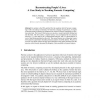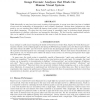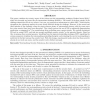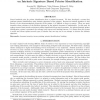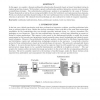IMF
2008
14 years 29 days ago
2008
Abstract: In contrast to the USA and the UK, the academic field of forensic computing is still in its infancy in Germany. To foster the exchange of experiences, we report on lesson...
MEDIAFORENSICS
2010
14 years 1 months ago
2010
While historically we may have been overly trusting of photographs, in recent years there has been a backlash of sorts and the authenticity of photographs is now routinely questio...
MEDIAFORENSICS
2010
14 years 1 months ago
2010
In this paper, we consider a low complexity identification system for highly distorted images. The performance of the proposed identification system is analyzed based on the avera...
MEDIAFORENSICS
2010
14 years 1 months ago
2010
This paper considers the security aspect of the robust zero-bit watermarking technique `Broken Arrows'(BA),1 which was invented and tested for the international challenge BOW...
MEDIAFORENSICS
2010
14 years 1 months ago
2010
In digital image forensics, it is generally accepted that intentional manipulations of the image content are most critical and hence numerous forensic methods focus on the detecti...
MEDIAFORENSICS
2010
14 years 1 months ago
2010
Current image re-sampling detectors can reliably detect re-sampling in JPEG images only up to a Quality Factor (QF) of 95 or higher. At lower QFs, periodic JPEG blocking artifacts...
MEDIAFORENSICS
2010
14 years 1 months ago
2010
This paper proposes an efficient method to determine the concrete configuration of the color filter array (CFA) from demosaiced images. This is useful to decrease the degrees of f...
MEDIAFORENSICS
2010
14 years 1 months ago
2010
Several methods exist for printer identification from a printed document. We have developed a system that performs printer identification using intrinsic signatures of the printer...
MEDIAFORENSICS
2010
14 years 1 months ago
2010
Content-aware resizing methods have recently been developed, among which, seam-carving has achieved the most widespread use. Seam-carving's versatility enables deliberate obj...
MEDIAFORENSICS
2010
14 years 1 months ago
2010
In this paper, we consider a forensic multimodal authentication framework based on binary hypothesis testing in random projections domain. We formulate a generic authentication pr...
